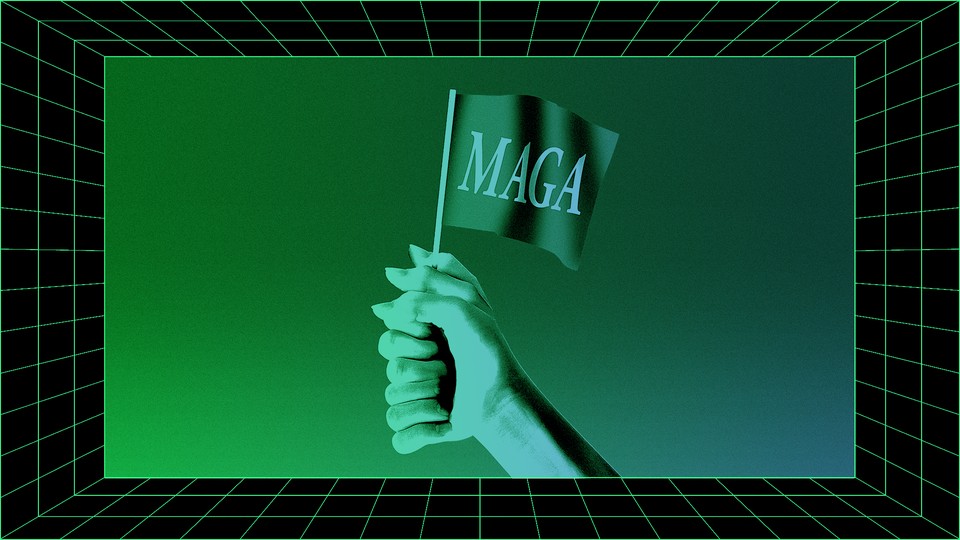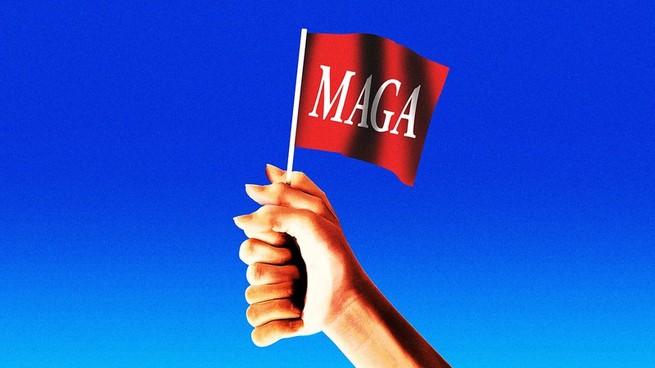Donald Trump, AI Artist
3 min read
This is Atlantic Intelligence, a newsletter in which our writers help you wrap your mind around artificial intelligence and a new machine age. Sign up here.
The era of generative-AI propaganda is upon us. In the past week, Donald Trump has published fabricated images on his social-media accounts showing Kamala Harris speaking to a crowd of uniformed communists under the hammer and sickle, Taylor Swift in an Uncle Sam outfit, and young women in “Swifties for Trump” T-shirts. Other far-right influencers have published their own AI slop depicting Harris in degrading sexual contexts or glorifying Trump.
As my colleague Charlie Warzel writes for The Atlantic, “Although no one ideology has a monopoly on AI art, the high-resolution, low-budget look of generative-AI images appears to be fusing with the meme-loving aesthetic of the MAGA movement. At least in the fever swamps of social media, AI art is becoming MAGA-coded.”
Such images are, in effect, an evolution of the memes that have long fueled the far right. But now even elementary Photoshop skills are no longer required: Simply plug a prompt into an image generator and within seconds, you’ll have a reasonably lifelike JPEG for your posting pleasure.
“That these tools should end up as the medium of choice for Trump’s political movement makes sense,” Charlie writes. “It stands to reason that a politician who, for many years, has spun an unending series of lies into a patchwork alternate reality would gravitate toward a technology that allows one to, with a brief prompt, rewrite history so that it flatters him.”

The MAGA Aesthetic Is AI Slop
By Charlie Warzel
Taylor Swift fans are not endorsing Donald Trump en masse. Kamala Harris did not give a speech at the Democratic National Convention to a sea of communists while standing in front of the hammer and sickle. Hillary Clinton was not recently seen walking around Chicago in a MAGA hat. But images of all these things exist.
In recent weeks, far-right corners of social media have been clogged with such depictions, created with generative-AI tools …
This AI slop doesn’t just exist in a vacuum of a particular social network: It leaves an ecological footprint of sorts on the web. The images are created, copied, shared, and embedded into websites; they are indexed into search engines. It’s possible that, later on, AI-art tools will train on these distorted depictions, creating warped, digitally inbred representations of historical figures. The very existence of so much quickly produced fake imagery adds a layer of unreality to the internet.
Read the full article.
What to Read Next
- Silicon Valley is coming out in force against an AI-safety bill: This week, my colleague Caroline Mimbs Nyce spoke with California State Senator Scott Wiener, whose attempts to impose regulations on advanced AI models have been met with severe pushback—not just from tech companies, but from other Democrats, including Nancy Pelosi. “The opposition claims that the bill is focused on ‘science-fiction risks,’” Wiener said. “They’re trying to say that anyone who supports this bill is a doomer and is crazy. This bill is not about the Terminator risk. This bill is about huge harms that are quite tangible.”
P.S.
Speaking of science fiction, I’m off to see Alien: Romulus tonight. Writing for The Atlanticabout this film and the greaterfranchise to which it belongs, the journalist Fran Hoepfner noted, “The Alien films have always touched on heady, pessimistic visions of a future overrun by capitalism and genetic experimentation, but they’re also movies about a human beating a monster—shooting it, setting it on fire, throwing it out of an air-locked door into the void of space.” Sounds like a good Friday night to me.
— Damon



